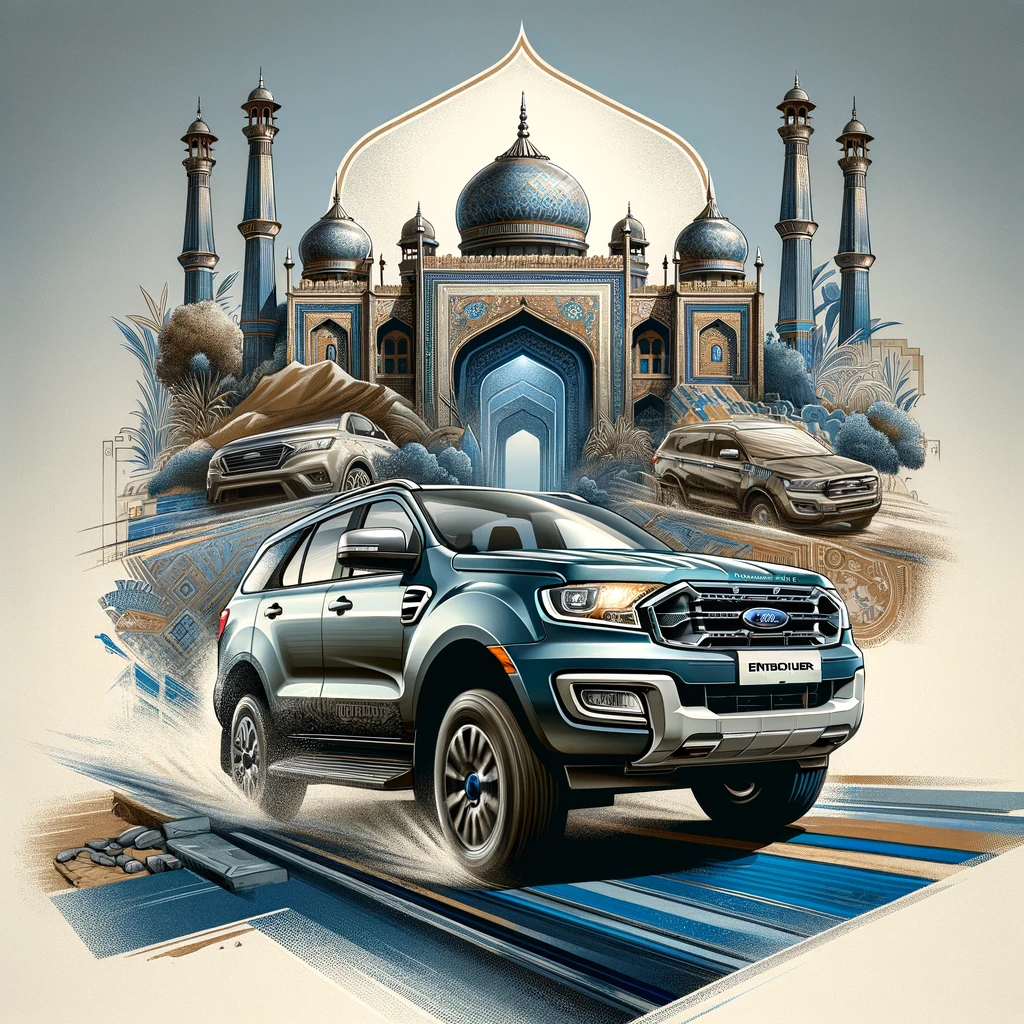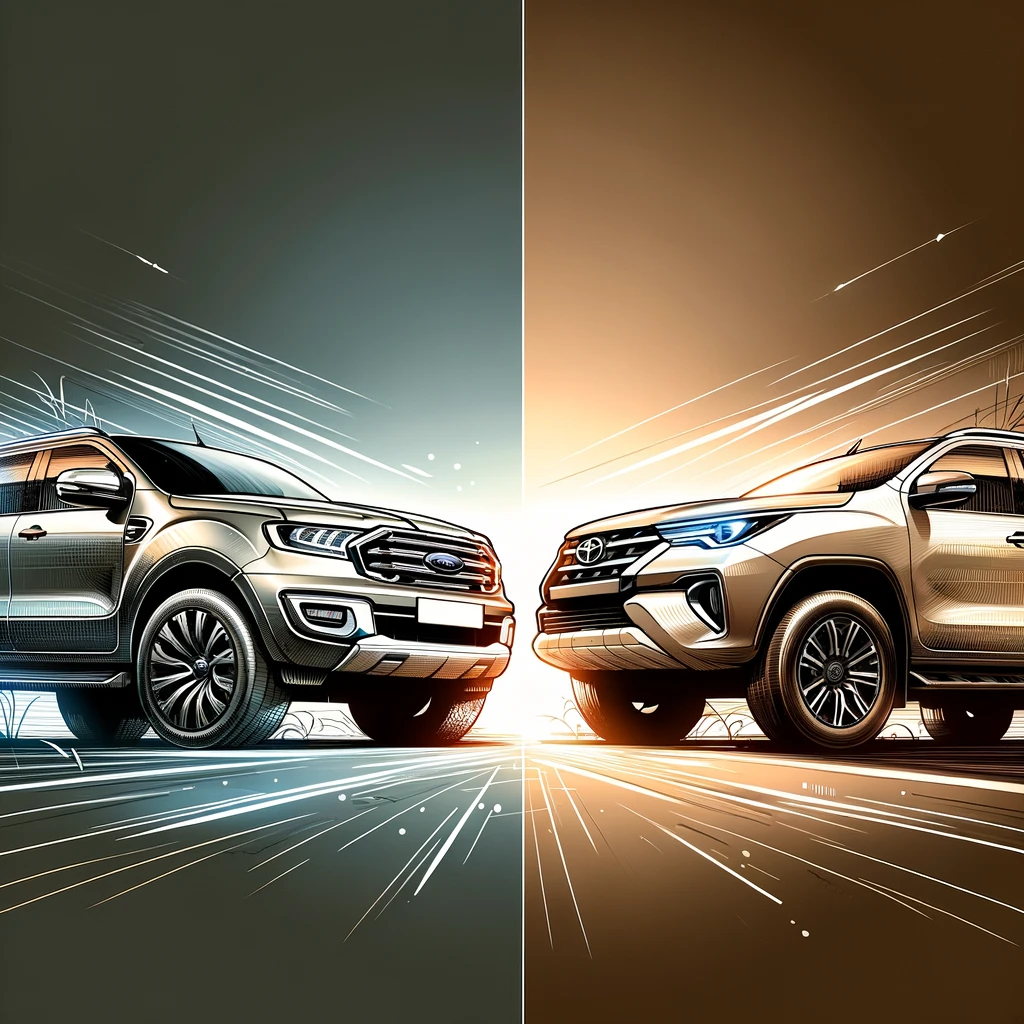The Indian automotive landscape is bracing for a potential game-changer as Ford Motors, a renowned global automaker, gears up for a highly anticipated comeback. After a brief hiatus, the American giant is poised to make a resounding return to the dynamic Indian market, with its flagship SUV, the Ford Endeavour, leading the charge.
Introduction
Ford’s history in India has been a rollercoaster ride, marked by both triumphs and setbacks. The company’s initial foray into the subcontinent dates back to the 1990s, when it established a manufacturing facility in Chennai. Over the years, Ford introduced a range of popular models, including the EcoSport, Figo, and Endeavour, catering to the diverse needs of Indian consumers.
However, in September 2021, Ford made the difficult decision to cease its operations in India, citing mounting losses of over $2 billion in the preceding decade. This move sent shockwaves through the industry and left many Ford enthusiasts disheartened.

Signs of Ford’s Potential Comeback
Despite the setback, the automotive world has been abuzz with rumors and speculations about Ford’s potential return to the Indian market. These whispers gained credence when the new generation Ford Endeavour SUV was spotted on Indian roads, fueling excitement among automotive enthusiasts and industry experts alike.
Adding fuel to the fire, Ford recently filed a design patent for the new Endeavour in India, further solidifying the speculation surrounding its imminent launch. This strategic move has ignited discussions about Ford’s plans for local assembly or direct imports, as the company seeks to regain its foothold in the lucrative Indian market.
The New Ford Endeavour: A Closer Look
The new Ford Endeavour is a true embodiment of the company’s commitment to innovation and design excellence. Built on the robust platform of the Ranger pickup, this SUV boasts a modern and sleek design that seamlessly blends style and functionality.
| Feature | Description |
|---|---|
| Platform | Built on the Ranger pickup’s platform |
| Design | Modern and sleek exterior, advanced safety features |
| Engine Options | 2.0-litre turbo-diesel variants, 3.0-litre V6 turbo-diesel |
Powered by a choice of two engine options – a 2.0-litre turbo-diesel and a potent 3.0-litre V6 turbo-diesel – the Endeavour promises to deliver an exhilarating driving experience while maintaining impressive fuel efficiency.
When compared to its closest rival, the Toyota Fortuner, the Endeavour stands out with its superior performance, advanced technology, and refined interior appointments, positioning it as a formidable contender in the highly competitive SUV segment.
Ford Endeavour 2024 Rumored Details in India
According to industry insiders and media reports, the new Ford Endeavour is expected to make its debut in India by 2025, with a potential launch as early as 2024. Here are some of the rumored details about the upcoming SUV:
Exterior Design
The new Endeavour is anticipated to draw inspiration from the globally available Ford Ranger pickup truck, sharing its platform and design elements. Enthusiasts can expect a muscular and edgy style, with a boxier front end featuring a prominent grille, Matrix LED headlights, and C-shaped LED Daytime Running Lights (DRLs). The SUV is likely to boast a squared-off design with aggressive alloy wheels and side cladding, while retaining its classic charm.
Interior and Technology
Inside, the Endeavour is rumored to offer a modern and tech-savvy cabin, with a 12-inch touchscreen infotainment system equipped with advanced connectivity features like Android Auto and Apple CarPlay. A 12.4-inch digital instrument cluster is expected to provide essential information such as speed, RPM, mileage, and gear position.
Notable features could include Intersection Assist, Pre-Collision Assist, lane keep assist, hands-free parking, adaptive cruise control, ambient lighting, wireless charging, and a 360-degree camera, elevating the overall driving experience.
Powertrain and Performance
Under the hood, the new Endeavour is likely to source its engines from the Ford Ranger lineup. Rumors suggest the availability of a 2.2-liter turbo-diesel engine and a potent 3.0-liter V6 turbo-diesel option. Transmission choices may include a 6-speed manual and a 10-speed automatic, catering to diverse driving preferences, including off-road capabilities with 2WD and 4WD options.
Pricing and Positioning
While official pricing details are yet to be disclosed, industry experts speculate that the revamped Ford Endeavour could be positioned as a premium SUV in the Indian market. Initial estimates suggest a starting price range of around Rs 60 lakh, significantly higher than the current pricing of the Toyota Fortuner, which ranges from Rs 33.43 lakh to Rs 51.44 lakh.
As Ford potentially prepares to re-enter the Indian market, SUV enthusiasts eagerly await official announcements and a closer look at the upgraded Endeavour, which promises to be a formidable contender in the highly competitive SUV segment.
Ford’s Strategy for the Indian Market
As Ford prepares for its comeback, the company is meticulously crafting a comprehensive strategy to ensure its success in the dynamic Indian market. One of the key decisions facing Ford is whether to opt for local assembly or direct imports for the Endeavour.
Local assembly at Ford’s existing Chennai facility could potentially offer cost advantages and better pricing competitiveness, while direct imports may allow for a quicker market entry and a wider range of model variants.
| Approach | Advantages | Disadvantages |
|---|---|---|
| Local Assembly | Cost advantages, better pricing | Longer lead time for production |
| Direct Imports | Quicker market entry, wider model range | Higher costs, potential pricing challenges |
Recognizing the growing popularity of SUVs in India, Ford is wisely focusing its efforts on this lucrative segment, leveraging its expertise and global reputation in SUV manufacturing. Additionally, the company’s inclusion in the Indian government’s Production-Linked Incentive (PLI) scheme in 2022 has fueled speculation about the potential introduction of electric vehicles (EVs) in the future.
Challenges and Opportunities
While Ford’s comeback presents exciting opportunities, it is not without its challenges. Rebuilding brand trust and customer loyalty will be crucial, as the company’s previous exit may have left a lasting impact on consumer perception.
To regain consumer confidence, Ford will need to implement strategic marketing campaigns, emphasize its commitment to the Indian market, and deliver exceptional products and services that resonate with the evolving needs of Indian consumers.
Moreover, the Indian automotive market is highly competitive, with established players like Mahindra, Tata, and Hyundai fiercely vying for market share. Ford will need to differentiate its offerings through innovative features, advanced technology, and competitive pricing to stand out in this crowded landscape.
As the industry undergoes a transformative shift towards electric mobility, Ford must also adapt to changing market dynamics and consumer preferences. Embracing sustainable transportation solutions and introducing a range of EVs could position the company as a forward-thinking and environmentally conscious brand, appealing to the growing eco-conscious consumer base.

Expert Opinions and Case Studies
Industry experts and analysts have weighed in on Ford’s potential comeback, offering valuable insights and predictions.
“Ford’s re-entry into India will not be an easy ride. The company will have to work hard to rebuild trust and brand perception among Indian consumers after its abrupt exit just a couple of years ago,” said Puneet Gupta, Director at S&P Global Mobility.
“However, Ford does have some advantages it can leverage. Its SUV lineup, especially the Endeavour, has maintained a strong brand pull even after production stopped. By focusing on the premium SUV segment and bringing in its latest global products, Ford can carve out a niche for itself,” Gupta added.
“Pricing will be crucial. Ford cannot afford to be seen as overpriced compared to competitors like Toyota and Volkswagen in the premium space. At the same time, it needs to position itself as a more premium, aspirational brand compared to the mass-market players,” he stated.
Gupta emphasized that Ford must have a long-term commitment to India this time around. “Frequent exits and re-entries tend to erode consumer confidence. Ford needs to assure buyers that it is here to stay and back that up with sustained investment in products, manufacturing, and after-sales support.”
The expert also suggested that Ford could consider locally assembling some of its electric vehicles in India to capitalize on the emerging EV market and changing consumer preferences towards sustainable mobility.
Overall, while the road ahead is challenging, Gupta believes that with the right strategy, products, and commitment, Ford can re-establish itself as a prominent player in the lucrative Indian automotive market.
Additionally, case studies of successful market re-entries from the automotive industry or other sectors can provide valuable lessons and best practices for Ford to emulate.
Example of Successful Market Re-Entry in India: Vespa’s Comeback
One notable case study that exemplifies a successful market re-entry strategy in India is that of Vespa, the iconic Italian scooter brand owned by Piaggio Group. Vespa had initially entered the Indian market in the 1960s but exited in the late 1990s due to intense competition from cheaper alternatives.
However, in 2012, Piaggio Group decided to re-introduce Vespa in India, recognizing the country’s burgeoning middle class and their aspirational desires for premium products. The company’s market re-entry strategy was meticulously planned and executed, resulting in a triumphant comeback.
Key Takeaways from Vespa’s Re-Entry Strategy:
- Positioning as a Premium Brand: Vespa positioned itself as a premium and aspirational brand, targeting urban consumers with higher disposable incomes. This strategy allowed the company to differentiate itself from the crowded and price-sensitive scooter market in India.
- Localized Manufacturing: To ensure cost-effectiveness and better pricing, Piaggio Group established a manufacturing facility in Baramati, Maharashtra. This move enabled the company to produce Vespa scooters locally, catering to the Indian market’s demand while avoiding high import duties.
- Extensive Marketing Campaigns: Vespa invested heavily in marketing and advertising campaigns, leveraging its iconic brand image and heritage. The company collaborated with Bollywood celebrities and influencers to create a strong brand association and appeal to the aspirational Indian consumer.
- Dealer Network Expansion: Recognizing the importance of a robust distribution network, Vespa focused on expanding its dealer presence across major cities and urban centers in India. This strategy ensured that the brand was easily accessible to its target audience.
- Product Customization: While retaining the classic Vespa design, the company introduced customization options and localized features to cater to Indian consumer preferences. This included adjustments to the seat height, storage compartments, and color options.
- After-Sales Service: Vespa emphasized providing exceptional after-sales service and customer support, establishing dedicated service centers and training personnel to maintain the brand’s premium positioning.
By implementing this comprehensive market re-entry strategy, Vespa successfully re-established itself in the Indian market, capturing a significant share of the premium scooter segment. The brand’s sales in India have consistently grown, and it has become a symbol of style and aspiration among urban consumers.
The key takeaways from Vespa’s successful re-entry highlight the importance of positioning, localization, marketing, distribution, and customer service in navigating a competitive market like India. By carefully adapting to local preferences while maintaining its premium brand identity, Vespa has proven that a well-executed market re-entry strategy can lead to remarkable success.
Conclusion
Ford’s resurgence in India is poised to be a captivating story of resilience, innovation, and strategic execution. With the new Endeavour SUV leading the charge, the company is well-positioned to reclaim its place in the hearts and minds of Indian consumers.
By leveraging its global expertise, adapting to evolving market dynamics, and delivering exceptional products and services, Ford has the potential to not only regain its foothold but also emerge as a dominant force in the Indian automotive landscape.
As the industry eagerly awaits the unfolding of this comeback narrative, one thing is certain: Ford’s return to India promises to be a game-changer, setting the stage for an exciting and competitive era in the dynamic Indian automotive market.














